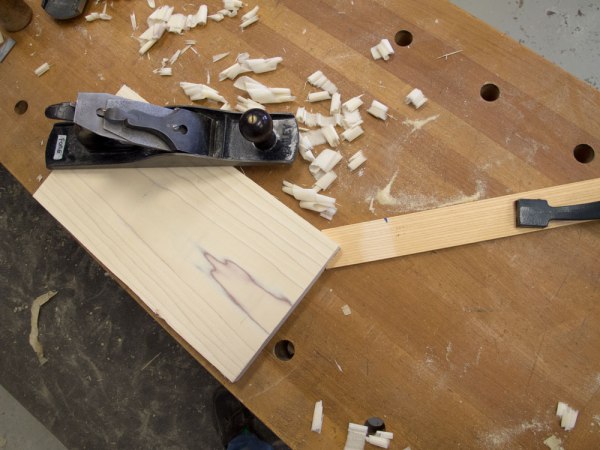
When Richard Maguire posted his fantastic entry on using a notched batten to hold work in place on the bench, he was eviscerated by a certain segment of the woodworking populace because Richard said it was an old technique and yet he did not offer up footnotes and cites.
Today I’m going to set the record straight on that.
But first, a little begging. If you haven’t tried using a notched batten, stop reading. Close your laptop and go down to the shop. Make a notched batten and try it out. The notched batten is the difference between needing an end vise and not needing an end vise.
And now back to our regularly scheduled exoneration. Today while editing one of the translated sections for “Roubo on Furniture” (due in early 2015), I came across this passage:
To trim [set right] the planks on their edges, you hold them along the length of the bench with holdfasts, or even when they are too short, you hold them at one end with a holdfast, and the other with a planing stop [figure 17], which is itself held on the workbench with a holdfast, and which you close against the end of the plank with strikes of the mallet. The planing stop is a piece of hard wood, at the end of which is made a triangular notch, in which enters the end of the planks, see figure 19.
 Yup. It is the notched batten, albeit a little shorter than the one currently on my bench. Curious, I went back to the original French to take apart some of the words. Roubo calls the device a le pied de biche, which in modern French comes out as “crowbar.” But more literally is “doe’s foot,” which is much more evocative. Fig. 19, by the way, shows a board being planed on its face, not just its edge.
Yup. It is the notched batten, albeit a little shorter than the one currently on my bench. Curious, I went back to the original French to take apart some of the words. Roubo calls the device a le pied de biche, which in modern French comes out as “crowbar.” But more literally is “doe’s foot,” which is much more evocative. Fig. 19, by the way, shows a board being planed on its face, not just its edge.
So now we have a name for it. We have a solid 18th-century account of its use and a drawing.
And so I say to Richard’s critics: Shut it.
— Christopher Schwarz